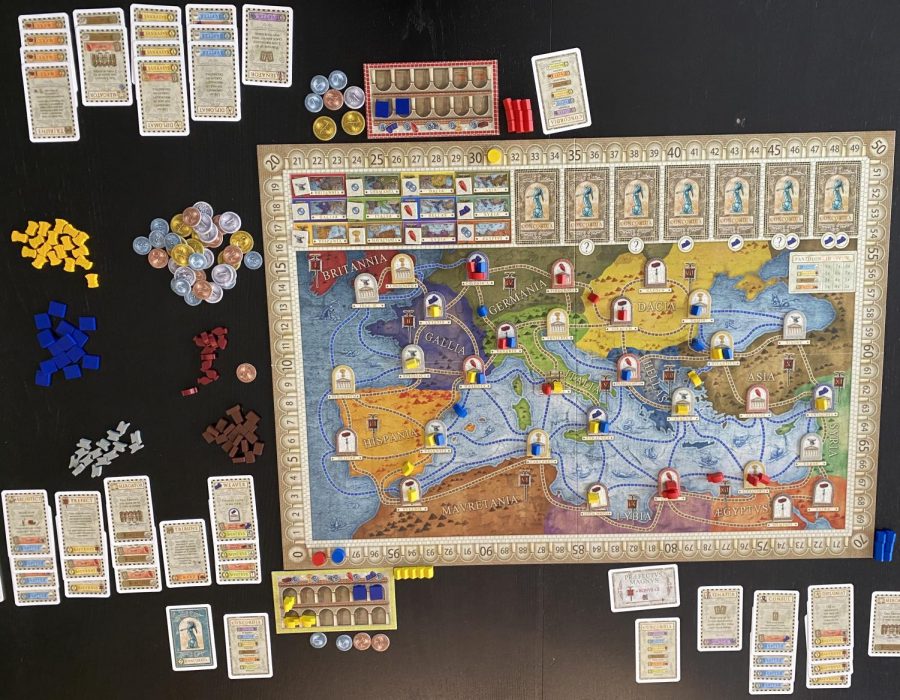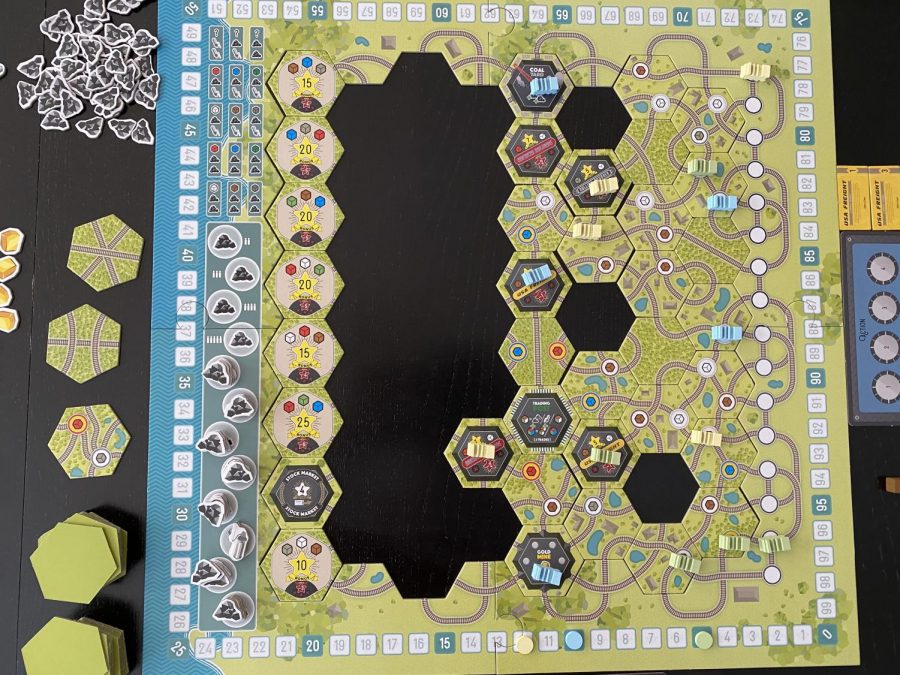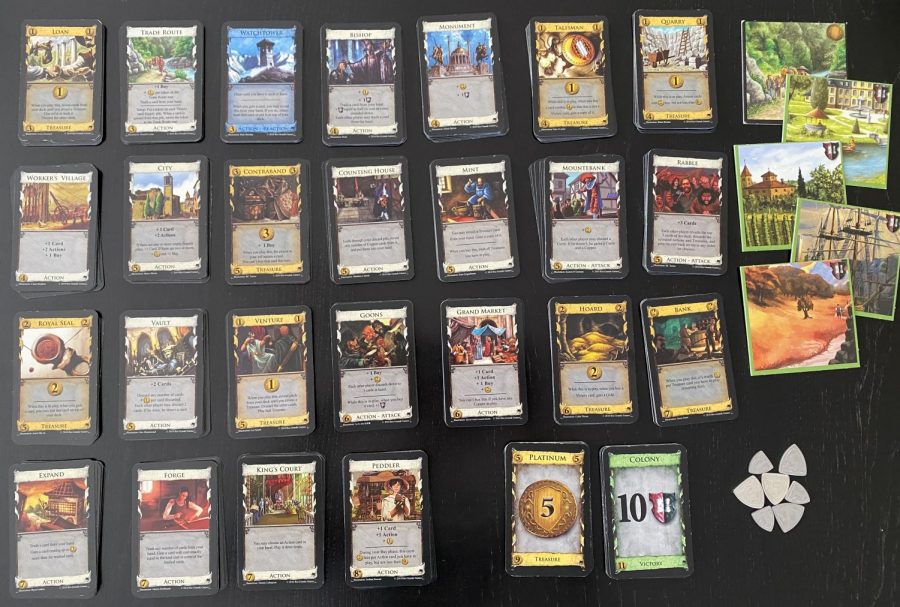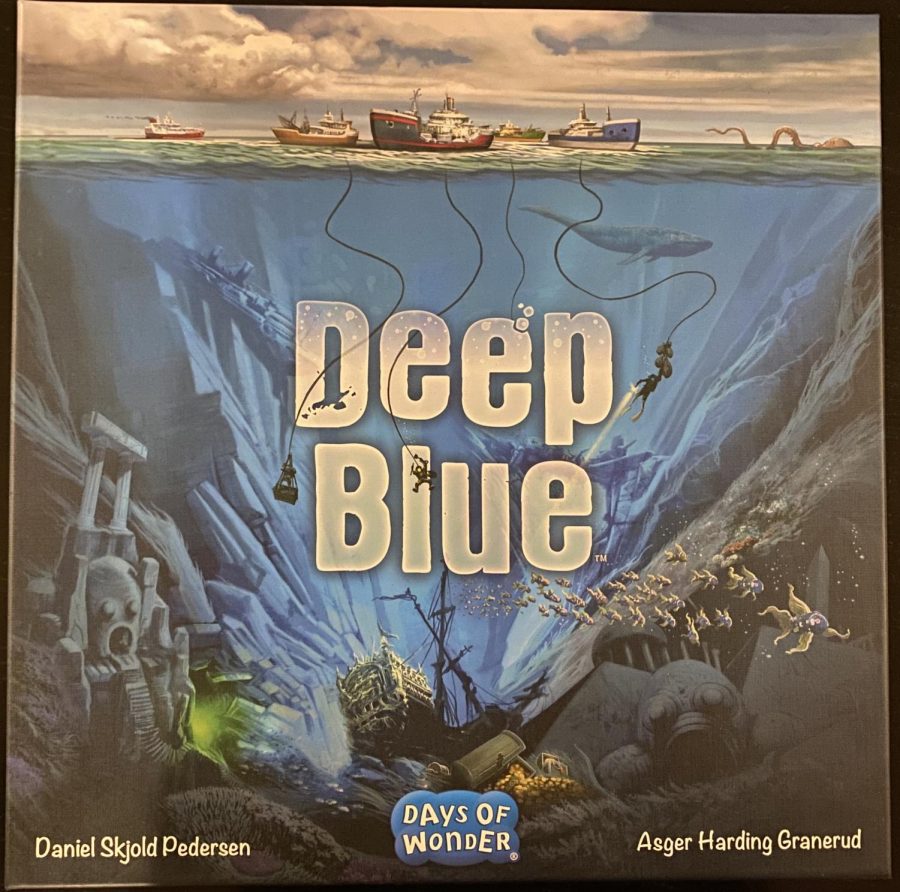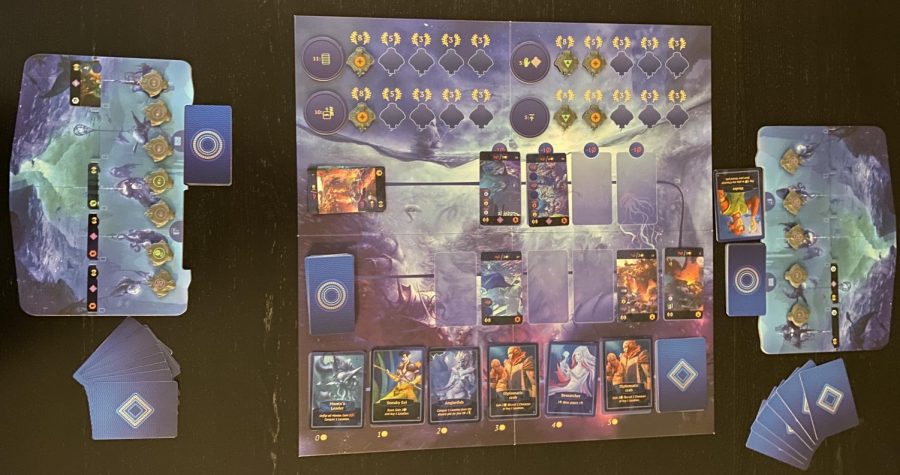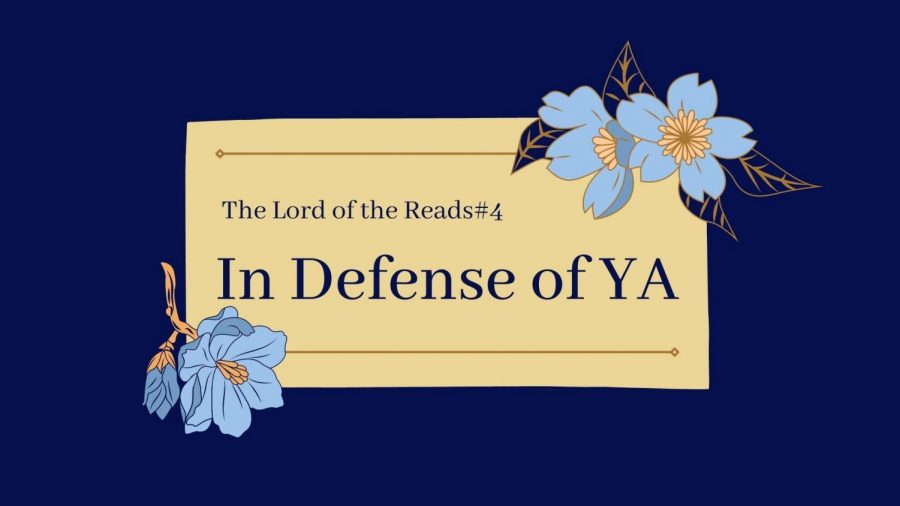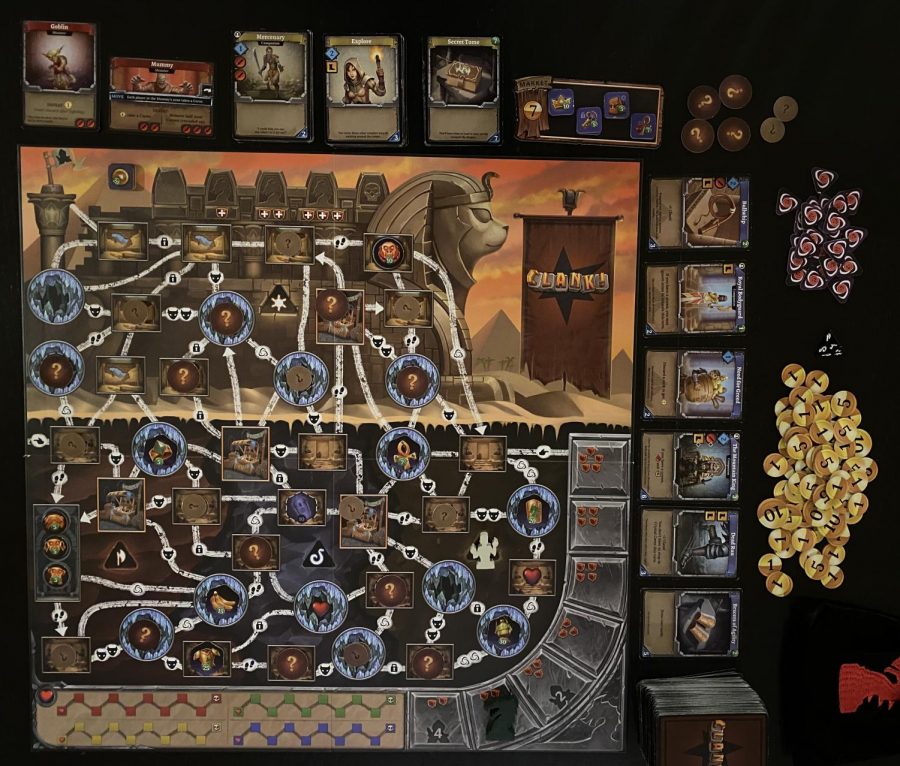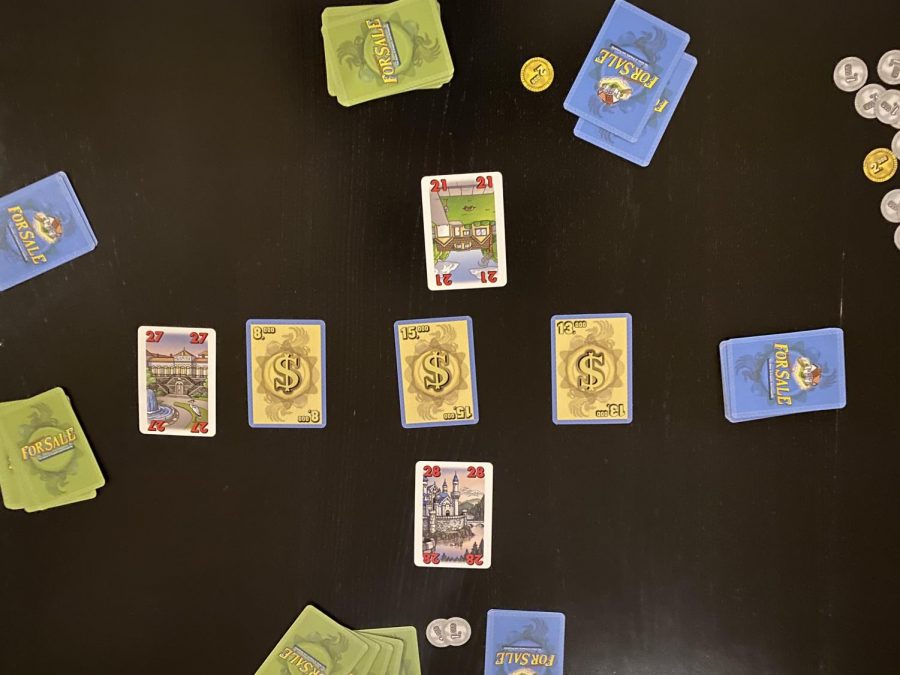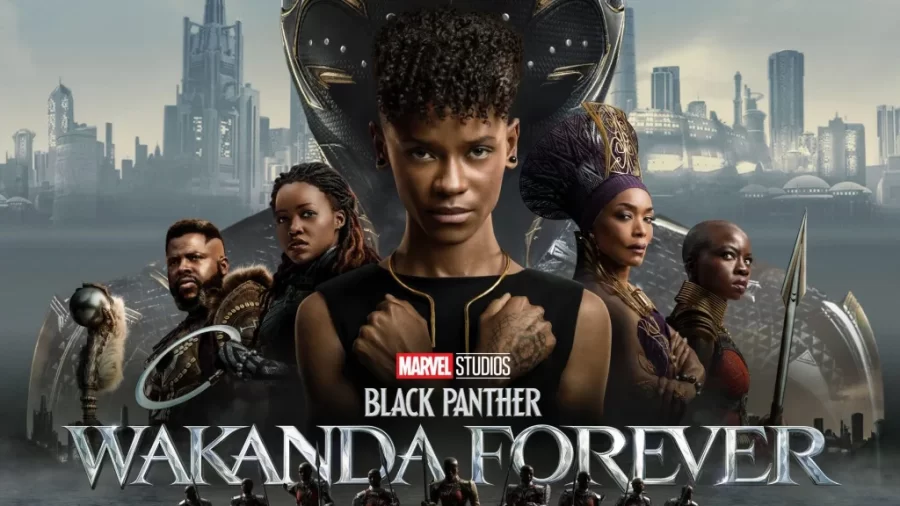It’s the height of the Roman Empire! Players are building houses around the Mediterranean Sea to produce resources and recruit helpers to improve their economy and score more points than their opponents. This week, we’ll be taking a look at Concordia, an engine-building and resource management game for two to five players. Concordia has minimal luck and high amounts of strategy; although it is a complex game that takes 90-120 minutes to play, the rules are easy to grasp. Concordia might be easy to play, but it’s much harder to play it well.
How To Play
Each player starts with seven cards, a storehouse with resources and colonists, and some money. Each player starts with one land colonist and one sea colonist in Roma. Players will take turns playing one card from their hand and following its instructions. Below are descriptions of the cards in the game and what they do.
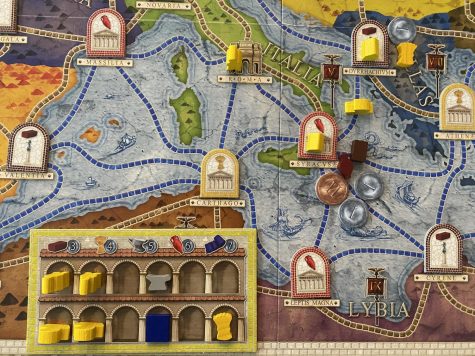
Architect
When a player plays Architect, they get to move their colonists and then build houses in the cities next to them. Colonists start in cities, but they will always be on the lines connecting cities once they start moving. Land colonists move on gray routes, and sea colonists move on blue routes. A player can move their colonists a total number of spaces equal to the number of colonists they have. They can split the movement among their colonists however they want as long as no colonist ends their movement on the line where another colonist is. After moving their colonists, the player can build in any cities next to their colonists. Players have a reference card, pictured on the left, that tells them how to construct a house in each city type. If other players have already built houses in a city, the money cost to build there must be paid again for each house already there. For example, a wine city normally costs four coins, but if two other players have already built them, the cost is 12 coins. One way players can trigger the end of the game is by building all 15 of their houses.
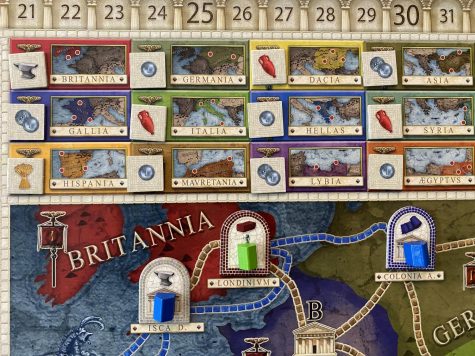
Prefect
When a player plays a Prefect, they have two options. The most common option is to produce resources. To do this, the player selects one province on the board and flips its province marker to its backside, showing coins. The current player gets the resource on the province marker they flipped. Then, all players get the resources shown on the cities in that province where they have a house. Once a province is on its coin side, it cannot be activated until a player chooses the second option, to take money. When a player chooses that option, they flip all provinces back to their resource side and get money for each coin that was previously showing.
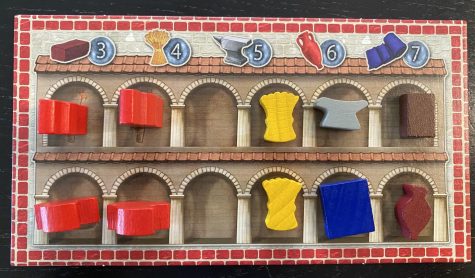
Mercator
First, the player who plays Mercator gets three or five coins. Then, the player can trade up to two types of resources. This means they can buy two types of resources, sell one type and buy one type of resource, or sell two types of resources. They can buy and sell any number of resources of the selected types. The price of each resource is shown on the top of each player’s storehouse.
Senator
When someone plays Senator, they get to purchase one or two cards. To purchase a card, players must pay the cost shown on the card plus any additional costs shown below that card. Purchased cards go into a player’s hand. After buying cards, all cards in the row shift towards the side with less additional costs. New cards are revealed from the deck to refill the row. If someone purchases the last card, they trigger the end of the game.
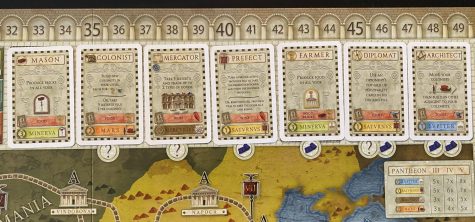
Consul
Consul is one of the few cards that players do not start with. Consul allows the player to purchase any one card of their choice, ignoring the additional costs. The purchased card goes into the player’s hand.
Colonist
Colonist is another card that gives the player a choice. One option is to take five coins plus one coin per colonist they have on the board. The other option is to get more colonists for a food and a tool each. Colonists are added from the storehouse to any city that the player has a house in. Colonist is also a card that players do not start with.
Specialists
There are five specialist cards, one per resource, that players can purchase. These cards allow players to produce resources in all cities of the type this specialist is for.
Diplomat
Diplomat is the most unique card in the game. When a player plays this, they get to copy the card played by one of their opponents.
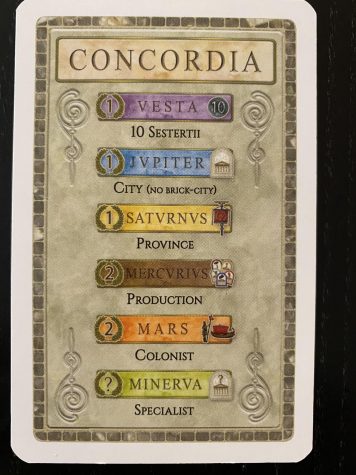
Tribune
When players want to get the cards they’ve already played back into their hand, they will play the Tribune card. However, this turn is not a complete reset; players will also get some money based on how many cards they’ve played so far and the opportunity to get one new colonist in Roma if they pay a food and a tool.
End Game and Scoring
The game ends when a player builds all their houses or purchases the last card. That player takes the Concordia card, worth seven points, and each other player takes one last turn. Then, all players sort their cards by the scoring type on the bottom. Players will determine how many items they have in each scoring category and multiply that by the number of points they have from cards with that scoring type. The specifics of scoring are shown in the picture on the right.
Final Thoughts
Concordia does not have any groundbreaking mechanisms, nor does it have a unique theme. However, it does put together a lot of popular mechanisms into an enjoyable experience. While there is nothing I can say to boost interest in the trading resources theme, the components in the game are well-made, durable, and look like the resource or object they represent. Another plus for Concordia is the game design and rules. I mentioned that there is nothing new in this game, but games do not have to introduce brand new things to be good. In fact, I like that Concordia includes several ideas I liked in other games and combines them into one game.
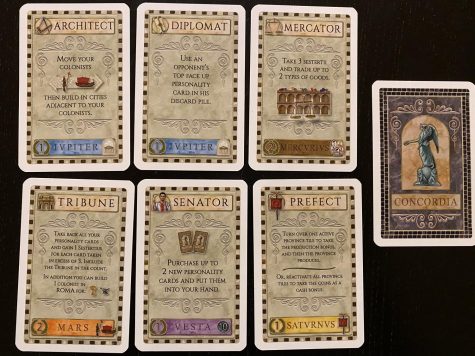
The main mechanism in this game is the engine-building one, where players play one card on each turn and eventually have to pick up their cards. I like this mechanism because all the cards players have are essential and play a specific role in getting points. One main card is the Architect, which allows the player to build houses. However, houses require moving colonists, paying resources, and spending money, which requires players to use Prefect, Mercator, and possibly specialists to get the right combination of resources. The other side of the game has to do with purchasing cards with Senator. When you purchase cards, you have to consider which card you get, how it scores points, and what resources it costs to buy.
The scoring system is not the easiest thing to understand, and many players don’t figure out how it works until they score their first game. Once players understand how it works, it becomes a balancing act to get the scoring types that you want the most. The game has a lot of options about specialization and diversification. It is definitely possible to try to get all the city types, all the provinces, and as many colonists and non-brick cities as possible, but it’s also a valid strategy to try to get all your colonists out and purposely collect all of the cards with that scoring type. It is these kinds of decisions that players make during the game about what they want to do next that makes the game interesting.
Another notable aspect of this game is the player interaction. I like that the game has quite a bit of player interaction, but none of it can completely ruin another player’s game. I already mentioned one form of interaction, which is that players have to time when to buy cards to get them at a low price and before their opponents. Another time player interaction is seen is when multiple players want to build on the same city. I like that everyone can build a house in the same city if they want, but there is a disadvantage if a player does this later than others. The increased money cost for building second or later makes players want to build first but won’t ruin someone’s game if they don’t. The additional cost is less meaningful for the cheaper cities and more meaningful for the cities that produce a more valuable resource.
The last main player interaction in the game is the Diplomat card. This card lets players copy the last card an opponent played. This subtle interaction is interesting in a variety of ways. Sometimes, an opponent might purchase a card you don’t have, so you could save your Diplomat for that card. Maybe you want to use Architect or Senator more times than you can, so you save the Diplomat for that. On the other side of this, you can look at what resources your opponents and play a card that they can’t copy, especially if you can figure out their plan.
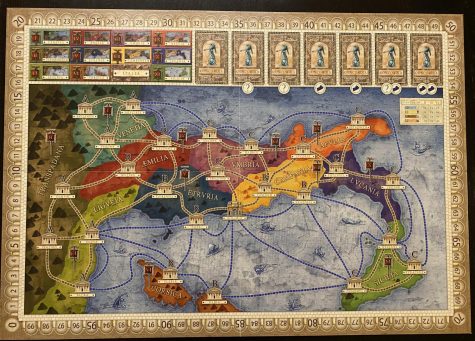
The last things I’ll mention are replayability, scalability, and game length. The game does take about 90-120 minutes as the box advertises. I usually only play with two or three players, so that length might increase with four or five players. That brings me to scalability, or how the game plays at each of the player counts. The game has two sides of the board: one for two to four players and one for three to five players. The other change that happens with more players is that more cards are added to the deck. Both sides of the board are fun to play, and with three and four players, you can pick which side of the board you want based on how tight you want your game to be. The additional cards added to the deck with each additional player does a good job balancing the game length at all the player counts. The game boards also tell players how many each scoring type are available at each player count.
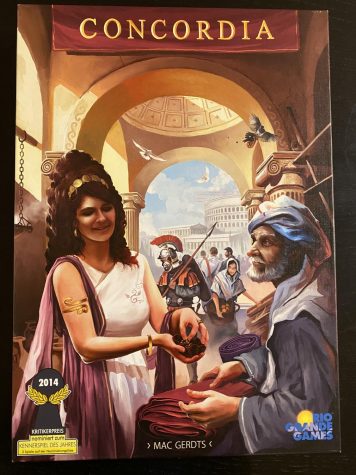
The game has replayability, with the city placement being semi-random and the order the cards show up changing each game. However, even with those adjustments in each game, this is the one area of the game that I have minor issues with. I don’t feel that each game is too different because the goal of building houses and getting cards is always the same. The strategic opportunities and costs do not change, so it seems like there are only a few different strategies to use in each game. Once you’ve tried everything out, the game is more about your tactics and adapting to what happens.
Overall, Concordia is a game that I highly recommend for anyone who likes games with minimal luck, engine-building, and set collection, or player interaction. I enjoy all the aspects of this game, especially how the cards give an ability during the game and end game scoring. The theme and replayability are minor problems only, so I’m going to give Concordia a 9 out of 10.
[star rating=”4.5″]

